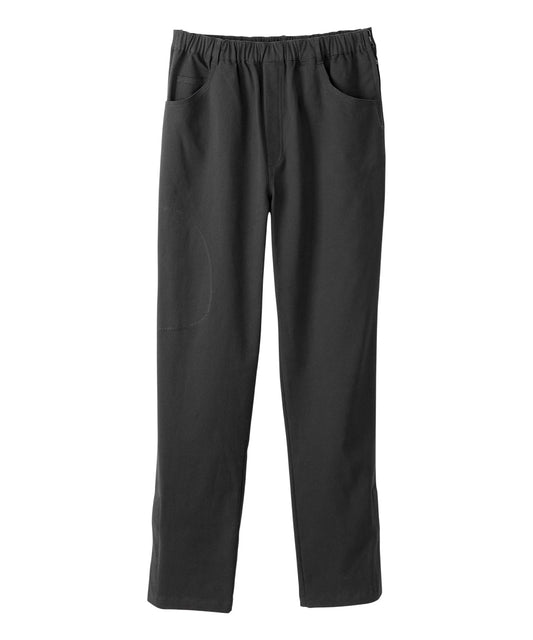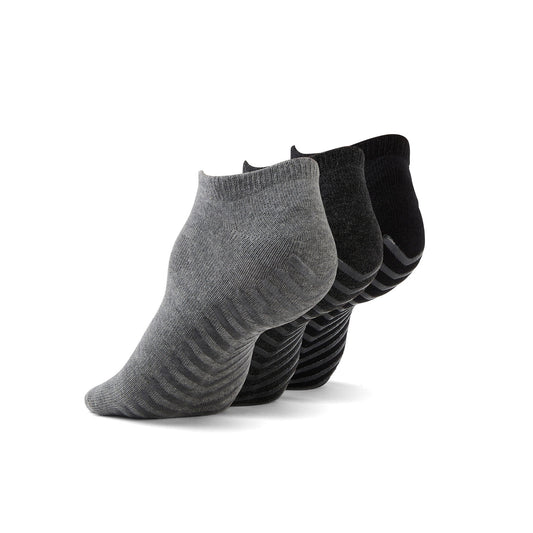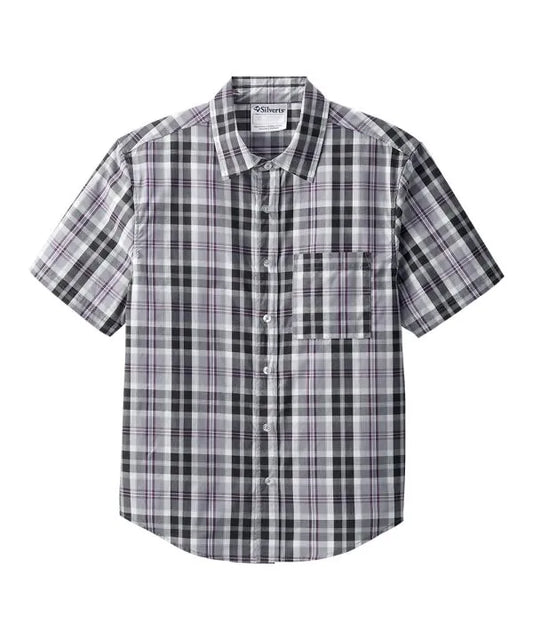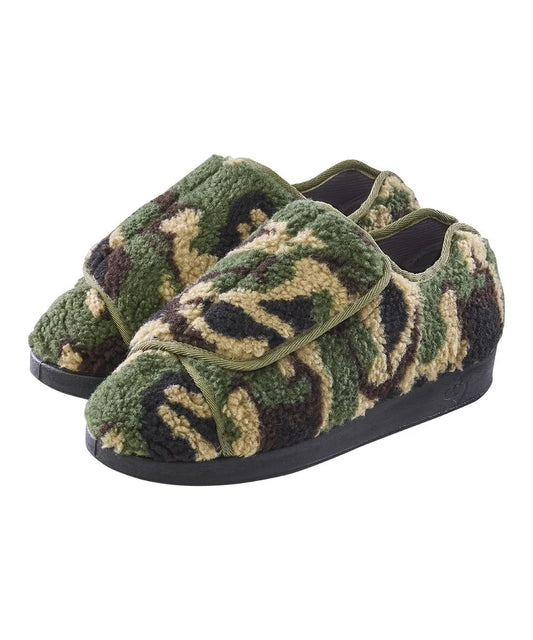Written by: Shreeya Shah
If there is one thing that comes with age, it is change: in your body as well as how you live every day. For seniors in assisted living facilities, simple daily habits such as getting dressed can become daily obstacles. Slipping a shirt over your head or buttoning up a pair of pants is more than a habit; it is a stark reminder each day of your loss of mobility. But adaptive clothing is helping to change that story. No longer a necessity, it has become a fashion statement of innovation, regard, and concern.
Adaptive clothing is designed and manufactured for seniors and others with limited mobility. It has offered back to many seniors living in assisted care facilities something they thought had long been gone, independence. Designs with magnetic closures, side-entry pants, open-back dress shirts, and tag-less fabrics have encouraged seniors to overcome dressing obstacles and encouraged ease and confidence in the all-important daily ritual of dressing. The importance here is not only the functionality of the clothing; it is the return of the ability to act in a dignified, fashionable manner.
Special Considerations for Assisted Living
The transition to Assisted Living is a big step. It may not only serve as the start of a new chapter with a new routine, but also new expectations and new environments. For many, the transition into Assisted Living could cause a mental adjustment no less daunting than moving. In an assisted living environment, the act of getting dressed is altered considerably. Suddenly, the actions of lifting arms above the head to put on a blouse, bending the upper body down to pull pants on, or even the complicated act of getting the coordination to zip up a sweater seem to be difficult or altogether impossible. The emotional upheaval plays on the physical stress in one sense, and turns the whole operation of getting dressed into a moment of stress, especially when the help of the caregiver is required.
This became very apparent when someone I know transitioned to a senior living facility after a stroke. The mobility she enjoyed was limited, and the task of dressing was one of her greatest independent tasks. Yet dressing was now a task filled with frustration for her. She was frustrated until we added adaptive clothing to her closet. Her face radiated when she put on a jacket with magnetic closures for the first time on her own. It wasn't just easy, it was empowering.
Adaptive clothing allows for those moments. It breaks down barriers, both through function and emotion. Adaptive clothing sets the stage for moments of independence and assurance in an environment where those moments may be limited through decreased physical comfort, along with increased need for support.
Best Features for Caregiver Support
For caregivers, time and efficiency are imperative. Everything from bathing and dressing to medication and assistance with mobility, whether an employee or a family member, caregivers manage everything. When dressing is simplified, through adaptive design, the effects can be significant.
A perfect case in point is the Men’s Sherpa-Lined Magnet Closer Jacket. Warm and comforting, rugged looking, and hiding the largest functional secret: magnets instead of buttons and closures. It is easy on, clicks shut in seconds, requires less fine motor skill involvement, feels familiar, looks stylish, yet is supportive to the wearer and the active helper.

Open back tops as styles offer a different, yet immeasurable benefit. Garments in this style allow caregivers to dress someone from the back, without the need for overhead arm movement or twisting the body, while also facilitating dressing in bed or a chair, and preserving modesty the entire time. The open back top is a great functional option, while respecting both their time and dignity.
Wide-legged pants and/or side-accessing pants are other options to minimize effort. Styles such as wide-legged pants or side-zipping trousers are tummy styles that support those recovering from hip surgeries, arthritis, or using a mobility device. Certain types of pants are also appealing because wearing them means the caregiver can manage holding the person’s toileting needs in less time and effort, better yet, the senior is also comfortable.
The seemingly more subtle changes in design, hidden magnetic closures, back openings, tagless inside labels, are, in fact, considerable quality of life improvements for both persons taking part.
Where to Buy Senior-Adaptive Clothing
Though adaptive fashion is still carving out its niche in the mainstream market, some brands are doing a terrific job of responding to real-world needs and are thinking critically about their designs. At the top of the list is June Adaptive - a brand dedicated to creating functional, stylish fashion.
Where June Adaptive shines is in its intentionality. The brand does not serve a generalized population; the brand is incredibly sensitive to the nuanced and individualized needs of a senior or a person living with a disability. Their collections have everything you would want in a fashion wardrobe that includes stylish daywear, warm outerwear and functional shoes.
That is what separates June Adaptive from the rest: it takes the clinical out of adaptive clothing, and very much retains the fashionable part. The clothing does not look or feel institutional; you would choose to wear it and take your mobility levels out of the account, and that is really what makes the difference.
Other companies offer great basics and have helped to normalize adaptive fashion, especially in shoes and undergarments, but at June Adaptive, they go above and beyond. For good measure, they add compassion to their product descriptions, sizing guides for seated wearers, and practical tips on how the clothing might support a daily experience.
This kind of thoughtful care in fashion matters for seniors and their caregivers, too.
How to Keep Your Style
Adapting a wardrobe doesn’t require giving up elegance; it just means adapting it to fit both your body and your spirit. Adaptive fashion is opening the door for not just functionality, but individuality.
When someone tries on adaptive clothing for the first time, one thing will be apparent right away. They are not only putting on a garment where the zipper is fastened with a magnet, but is it comfortable to wear? What is important is that they are seeing a garment that is both functionally and personally meaningful. For example, look at the Women's Magnetic Zipper Active Jacket. With its slim fit and colour choices, the jacket is comfortable and stylish. The jacket is easy to put on with the magnetic zipper! This is adaptive fashion that delivers both options: feeling and looking good, while being easy to put on.

From bold prints, deep jewel tones, and tones for layering, adaptive fashion provides something for an individual’s taste. Having the choice of colours, textures, and fits is crucial to maintaining your confidence and dignity. Especially in assisted care, where so much can feel out of our control.
Accessories matter, too. Lightweight scarves with Velcro ends, slip-on shoes, and shawls with magnetic clasps enable seniors to make a complete outfit their own. And layering intentionally distinguishes between your temperature and your mood-even if you wear a cute cardigan over a moisture-wicking tee or a draped shawl over a dress.
These touches make the senior feel "put together"-whether going to a communal lunch, a family visit, or having a quiet afternoon with a book. Having a personal style is grounding-it communicates to the world, "This is who I am." Adaptive fashion preserves that voice.
Creating Dignity-Preserving Design
One of the understated merits of adaptive clothing is the benefit of dignity in some everyday situations. In assisted care, privacy and autonomy are often nonexistent. Clothing, when designed with this goal in mind, can help restore a sense of self.
A close example is the Men's Denim Jacket with Magnetic Buttons. It has a very classic, laid-back, cool look while introducing magnetic fasteners. There is no difference to the unassuming observer; it simply provides a more accessible, smoother dressing experience.

But dignity is more than fasteners. It is about how clothing honours someone while seated in a wheelchair, it is about seams that do not agitate sensitive skin, it is about jackets that don't create bulk in the back, and it is about pants that keep coverage while moving/transferring.
They are small things, but they bear a heavy weight of value and dignity. Adaptive clothing does not just eliminate the barriers of dressing. It restores grace to the process of dressing. It ensures people in care settings feel dignified, comfortable and worthy of the effort someone has taken to focus on all their details, as they have perhaps always considered.
This isn't just fashion. It is about connection, self-respect and everyday joy.
Final Thoughts
Getting dressed for most seniors shouldn’t be a daily struggle. And it doesn’t have to be. It can be a moment of comfort, ease, and even joy with the help of adaptive clothing. In assisted care, where independence can feel tenuous, the right shirt or pair of pants could mean the restoration of something very powerful: autonomy. For the caregiver, it is a huge relief. It also assists caregivers to be more efficient. For seniors, it helps restore a little individuality.
June Adaptive continues to lead the way with solutions, understanding these needs. Garments like the sherpa-lined jacket, the magnetic zipper active jacket, and the denim jacket are well-designed pieces that marry necessity with timeless design.
Learn more at juneadaptive.com and see how fashion can still be relevant as needs shift and change.
Because dignity never goes out of style, neither should you.















